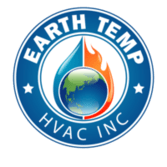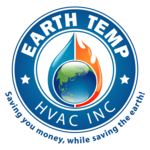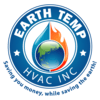4 Ways to Improve Senior Citizen Indoor Air Quality
Top 100 HVAC Blogs
These days, the words “indoor air pollution” and “sick house syndrome” are getting a lot of press. They refer to certain houses that are constructed so tightly that natural ventilation is no longer accessible, as it once was. Pollutants can be trapped in tight construction, whether it’s in a new home or one where the homeowner has reduced air filtration to conserve resources by caulking and weather-stripping. Indoor air quality has a variety of effects on people, but seniors, especially those with asthma, lung disease, or weakened immune systems, are thought to be particularly susceptible to certain forms of indoor pollution. Dust mites and pet dander, mold spores and viruses, as well as gaseous contaminants like cigarette smoke and off-gassing from paints, cleaning materials, and certain construction products, may all contribute to the pollution.

Here are some suggestions for improving the quality of indoor air:
1. Take Advantage Of Natural Ventilation
Opening windows and doors may help to clear the air, but in extremely hot or cold weather, leaving them open or not opening them at all is not a choice. You may, however, use spot-ventilation at some of the more popular pollution sources. Make sure the exhaust fans in the kitchen and bathroom, as well as the dryer vent, are working properly. These fans help to remove moisture that could otherwise cause mold to develop. Paints, adhesives, solvents, and certain construction materials can emit toxic fumes. If you’re doing a hobby, making a home repair, or having one made, use natural ventilation to get rid of any fumes.

2. Replace The Filters In The Furnace And Air Conditioner
Filters in forced-air heating and cooling systems keep the equipment safe from household particles. The filters should be changed on a regular basis, at least at the start of the heating season and the cooling season if the system includes a central air conditioner.
Mold spores, bacteria, and other allergens are too small for standard filters to extract. A high-efficiency filter is needed to remove these contaminants from the system. Any filter’s efficiency is reflected in its ranking. The American Society of Heating, Refrigeration, and Air-Conditioning Engineers created a ranking scale that ranks filters from one to twenty. The acronym for this is MERV, which stands for Minimum Efficiency Reporting Value. The Environmental Protection Agency recommends filters in the seven to thirteen range for homeowners.
Since the system ranks all air filters, including those used in hospitals and industrial facilities, MERV can be confusing. The Home Depot responded by simplifying the rating system for the goods it sells. The air filter performance rating (FPR) framework is what it’s called. A third party verifies the filters. The scale goes from four to ten. The higher the level, the smaller the particles, including allergens, mold, bacteria, and virus carriers, that the filter will remove from the air. Electrostatic charges are used to filter out pollutants in most of the higher-rated filters. Some of them can also eliminate odors. The Air Filter Performance Rating (FPR) System is described below.
Consult a heating, ventilation, and air-conditioning (HVAC) contractor before replacing the filter. Since high-efficiency filters may reduce system airflow, the technician can need to change the blower motor. Reduced air flow will put a strain on the equipment, potentially causing it to fail.

3. Make Use Of Non-Polluting Products
Limiting the products that can cause emissions is one way to limit indoor air pollution. Paints, adhesives, cleaning materials, solvents, and construction products, such as carpets and other forms of flooring, can emit fumes that are potentially harmful to certain people. The aim is to buy goods that emit little or no VOC. VOCs (volatile organic compounds) are organic compounds that are released into the air. At room temperature, they are chemical compounds that are volatile enough to evaporate and emit fumes. Although the majority of VOCs are safe, some can cause dizziness, headaches, and irritation of the eyes, nose, and throat. Long-term exposure can cause severe health problems.
Low-VOC paints and other finishes are available from most major manufacturers. There are also certification programs for the industry. The Resilient Floor Covering Institute, for example, funds the FloorScore certification program for vinyl flooring items. Third-party monitoring guarantees that the goods follow strict indoor air quality requirements and emit low levels of VOCs under this scheme. The Green Label and Green Label Plus services of the Carpet and Rug Institute certify carpets, adhesives, and carpet padding for low VOC emissions.
4. Conduct Tests And Keep An Eye On Things
Install carbon monoxide alarms and get your home checked for radon. Radon is an odorless, invisible gas that is generated by the natural decay of uranium in some soils. It can cause serious illness if it makes its way into your house. The test can be done at home, and test kits are relatively inexpensive. In certain cases, you take a sample of your home’s air and send the canister to a laboratory for analysis. If your home has a radon outbreak, there are many methods for preventing radon from entering.
Another odorless, invisible gas that can hurt you is carbon monoxide (CO). CO is a byproduct of combustion, and it can come from a variety of sources in the house, including unvented kerosene heaters, fireplaces, gas-fired water heaters, and improperly vented space-heating equipment. CO in the home can also be caused by a car idling in an attached garage. The detector will alert you if there is a problem before it becomes dangerous. CO detectors are required by many building codes in new homes. Every level of your home should have one, according to the Environmental Protection Agency.
Indoor air pollution can be a serious issue for seniors, but you can ensure that the air in your home is safe and healthy by taking a few simple measures. We offer our advice on senior-related topics, like how to choose an AC or heating
air filter.










